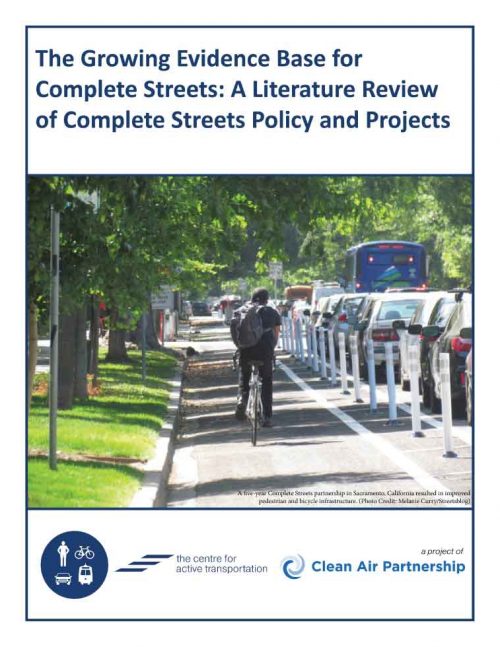The Growing Evidence Base for Complete Streets: A Literature Review of Complete Streets Policy and Projects, created by Ely DeSandoli, intern at The Centre for Active Transportation (TCAT), was released in October, 2020.
Complete Streets, streets that are designed to be safer for everyone, have become more widely adopted in the last decade in municipalities across the continent. Based on our ongoing research at TCAT, there has been a steady uptake in Canadian cities since 2009, with 2014 being the year to date with the most Complete Streets policies created. 87 Canadian municipalities currently have at least one form of Complete Streets policy, typically adopted within transportation master plans or official plans.
But how is this transportation planning concept viewed within the academic world? We dug into the scholarly literature to find out. The 14 academic articles and one book included in our review span from 2009—the year the first municipal Complete Streets policy was created—to 2020. We searched for articles published in peer-reviewed journals and scholarly books covering the topic of Complete Streets, with specific mention of Complete Streets within the title or body of the article. Searching for “complete streets” in Google Scholar and Worldcat returned few results, but the articles we did find pointed us to more through their references.
The majority of the academic articles reviewed here examine the effectiveness of Complete Streets policy in the U.S., with some providing case studies of successful implementation of these street types. Some authors offer ways in which to measure the completeness of Complete Streets, which could be particularly helpful for municipalities looking to move from policy to implementation. Only two of the articles and one book look at Complete Streets with an intersectional lens; the effects of Complete Streets across gender and race have yet to be studied extensively. One study reviewed provides an international glimpse at Complete Street potential in Saudi Arabia, highlighting the need for context-dependent approaches when taking this policy abroad. Finally, only a couple of the articles provide a critique of Complete Streets, a unique standpoint given the generally positive opinions around this concept.
Some key takeaways from this literature review include:
- The necessity of adopting a context-specific approach to Complete Streets design and implementation.
- The need for a concrete form of assessing the “completeness” of streets—both on its own and within a larger network—so as to gauge the effectiveness of the Complete Streets redesign or development.
- A good process for handling trade-offs in Complete Streets implementation is important yet still largely lacking in practice. Based on current research, cost and reduction in automobile level of service (LOS)—arguably two of the main deterrents to implementing Complete Streets— are only marginally affected by Complete Streets projects.

